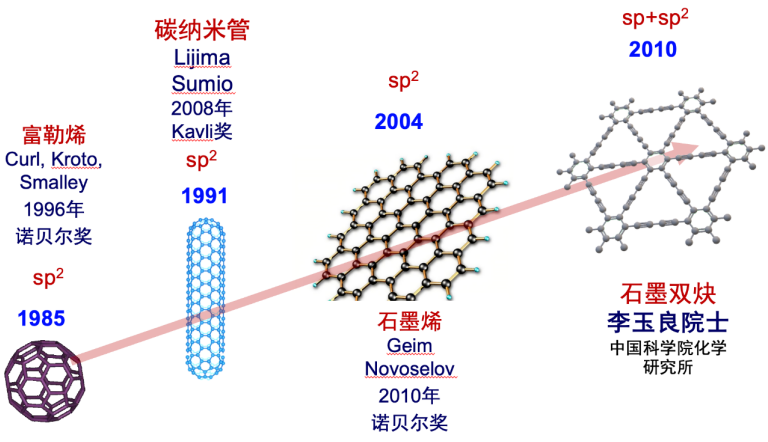Westlake University Achieves Mass Production of 16.5g Graphdiyne: A Breakthrough for Lithium-Ion Batteries and Fuel Cells
Researchers at Westlake University, led by Dr. Lele Duan, have successfully synthesized graphdiyne and its derivatives using a metal-free nucleophilic cross-linking wet chemical approach. This innovative method allows for the large-scale production of up to 16.5 grams of graphdiyne, offering a cost-effective and time-efficient pathway to meet the growing demand for carbon materials.
Key Highlights
- High Performance Synthesis: The process reduces production costs and time while scaling up graphdiyne synthesis, positioning it as a promising material for industrial applications.
- Versatile Applications: Graphdiyne’s sp-sp² porous structure makes it ideal for developing single-atom and cluster-based metal catalysts. Its chemical stability allows it to perform efficiently in harsh conditions, with potential uses across several domains:
- Hydrogen Production: Enhances hydrogen generation via water electrolysis and methanol reforming.
- Fuel Cells: Improves catalytic efficiency in hydrogen fuel cells.
- CO₂ Reduction: Converts carbon dioxide into valuable chemicals and fuels, promoting carbon recycling.
- Biofuel Production: Speeds up biomass conversion with increased reaction selectivity.
- Selective Catalysis: Optimizes organic synthesis processes such as C-H activation.
- Pollutant Degradation: Facilitates oxidation and reduction reactions to remove harmful substances from wastewater and exhaust gases.

The Evolution of Carbon Materials
The advancement of graphdiyne follows a long history of carbon discoveries. Fullerenes (1985), carbon nanotubes (1991), and graphene (2004) have revolutionized materials science, leading to numerous breakthroughs. In 2010, the Chinese Academy of Sciences achieved the first synthesis of graphdiyne using copper-catalyzed cross-coupling, sparking global interest.
Graphdiyne, a new carbon allotrope with sp-sp² bonds, offers tunable properties that outperform traditional carbon materials. Despite its promise, the complex synthesis has limited its exploration—until now. Westlake University’s efforts mark a significant step forward.
Overcoming Challenges in Graphdiyne Synthesis
The research team initially faced setbacks when earlier methods produced graphdiyne with structural defects. However, breakthroughs emerged in 2018 when a research group from Fudan University demonstrated a mechanochemical synthesis route using calcium carbide and hexabromobenzene. Inspired by this, the Westlake team refined the process using nucleophilic substitution with protected alkynes, eventually achieving improved solubility and higher structural precision.
Further improvements involved designing self-polymerizing molecules with C₃ symmetry to enhance control over graphdiyne’s structure. By fine-tuning reaction conditions, the team achieved the optimal carbon-to-fluorine ratio, confirming the quality of the material.
Paving the Way for Graphdiyne’s Future
The team plans to further explore graphdiyne derivatives to meet specialized application needs. New research directions include:
- Tao Song will focus on designing nitrogen- or fluorine-rich carbon materials.
- Chaoyang Chen will lead efforts to develop single-atom and cluster catalysts based on graphdiyne.
- Jiaxi Yin will explore crystalline graphdiyne structures and their properties.
With the backing of Dr. Duan, the team aims to unlock new possibilities in carbon materials, pursuing the “perfect” graphdiyne crystal.

This groundbreaking research was published in Angewandte Chemie International Edition, with Tao Song and Hong Liu as co-first authors, and Dr. Duan as the corresponding author. As carbon-based materials continue to push the boundaries of technology, the achievements of Westlake University mark a significant milestone in the field of advanced materials science.
Reference:
Song, T., Liu, H., et al. (2024). Metal-Free Wet Chemistry for the Fast Gram-Scale Synthesis of γ-Graphyne and its Derivatives. Angewandte Chemie International Edition.

